David Cross – 7 March, 2011
'White Noise' feels like a potentially interesting idea that is only partially cooked. This may be the result of that increasingly familiar pressure on artists making temporary public art to quickly soak up the otherness of New Zealand culture, formulate a plan and then implement it in a painfully short timeline.
Auckland
Héctor Zamora White Noise
Bethells Beach (performance)
26 February 2011
Shed 6, 90 Wellesley St (installation)
2 March - 18 March 2011
projectspace B431 (video)
3 March - 19 March 2011
Hector Zamora has a disarmingly good strike rate as an artist over the last ten years. Working largely in the public sphere, his practice has become characterised both for its ambitious architectural form and for an unusual dexterity in negotiating a breadth of locations and communities. Zamora, Mexican by birth but now based in Sao Paulo, is able to envisage remarkable transformations of seemingly anodyne locales - and he seems to get the mix of his own aesthetic flavour and a responsiveness to the flavours of different communities right more often than not.
Work such as Untitled 2006 a simple rope climbing structure for the Havana Biennial, elegantly mixes his interest in arte povera architectural structures with a generous sense of providing a fun activity for the children of a poor Havana neighbourhood. Likewise his well known Atopic Delirium 2009, two buildings in the Bogotá CBD each with a floor stuffed to overflowing with bananas, is delightful in its mix of absurdity, entropy and a considered blurring of rural and urban divisions.
Zamora often deftly captures the seething multiplicity of Latin American life, its pageantry, fecundity but also poverty and he draws on the enforced qualities of practicality and make-do innovation to drive his interventions. Paracaidista 2004 is arguably one of the most compelling architectural interventions in recent memory, consisting of a shantytown DIY house barnacled to the exterior of the Carillo Gil Art Museum in Mexico City. The artist could not bolt anything to the museum’s façade so he constructed a basic armature that clung bacteria-like to the building. Fitted out with an improvised version of all the required utilities, he then occupied the space as a domestic dwelling for three months. As an exercise in radical improvisation, the work spoke of how necessity is the mother of invention for a great deal of urban South American architecture positioned way off the radar of urban planning.
With so many successful projects in temporary public art under his belt, it is a major disappointment that his project for Auckland, White Noise, feels so tentative and unresolved. Consisting of three components, a performance at Bethells Beach (which it should be noted I did not see), a video of the performance at Ilam Gallery, and an installation of the performance objects at Shed 6 on Wellesley Street, the work attempts to draw on a community of participants to build a social sculpture of over a hundred white flags anchored in the sand of Auckland’s iconic surf beach.
The premise seems more literal and redolent with obvious symbolism than in previous work suggestive of defeat, colonisation, cowardice as well as a trope of abstract painting/sculpture. But ultimately it just feels provisional and lacking coherence. It’s not unpleasant to watch flags fluttering in the breeze on a black sand beach and to have the sound of this amplified in the gallery, but nor is it especially profound. While it conceivably may have been a profound experience to make the work and to see the flags briefly order the wild excesses of the west coast, it’s hard to recover this through the documentation / re-staging and it does not overcome the conceptual fragilities of the premise.
Why the flags and why on Bethells Beach? One senses that the work ultimately speaks to the incongruity of abstract forms in the landscape, similar to Christo and Jean-Claude’s umbrellas in Central Park or wrapping of Little Bay, but the effect here is more low-fi, more humble in its attempt to reconfigure our understanding of the site. At the same time it is infinitely more reliant on the grandiosity of the setting to activate an art moment or moments requiring close up shots on the video simply to make the art appear to hold its own in the setting.
The compartmentalisation of the work does not help. Why the video and the installation are located across town from each other is something of a mystery aside from the fact that both venues were available. It’s not as if a raft of new layers are unfolded in each setting. Rather, the work seems to re-play its affects in different media with the one consistency being the amplified sound track.
White Noise feels like a potentially interesting idea that is only partially cooked. This may be the result of that increasingly familiar pressure on artists making temporary public art to quickly soak up the otherness of New Zealand culture, formulate a plan and then implement it in a painfully short timeline. One senses Zamora hedged his bets a little and in the process failed to mesh his distinctive modes and formal languages with a convincing or at least partisan site-based response. Where Zamora is so compelling in charting the complexities of Latin American cultures and cities, in Auckland his intervention feels like it is a bridge too far out of his comfort zone, and he speaks with a tentative, perhaps too-respectful, voice.
We are quick to chide international artists who come out here to make site-based projects and fail to incorporate the requisite local context in the work, but even this mode of operation - abrasive and insensitive as it may be - could be seen as preferable to a middle ground where authorial intent and local context are muddied to the point of cancelling each other out. Zamora’s best work gets the mix right often through a politics expressed via a distinctive whimsy and acerbic humour that unfortunately, is sadly missing from this project.
David Cross
Recent Comments
Ariane Craig-Smith
A correction: the film screened at Elam's projectspace B431. This was in acknowledgement of Elam's support of the project and ...
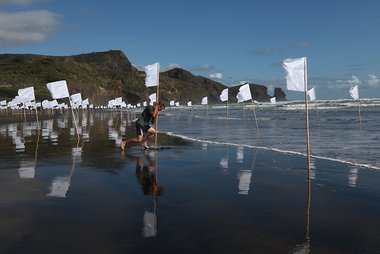

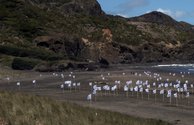

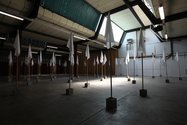
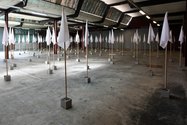
 Two Rooms presents a program of residencies and projects
Two Rooms presents a program of residencies and projects Advertising in this column
Advertising in this column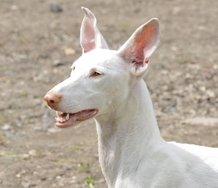
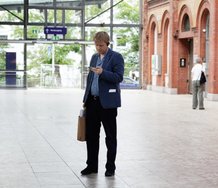

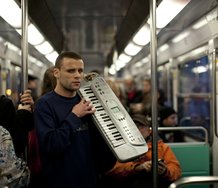
This Discussion has 1 comment.
Comment
Ariane Craig-Smith, 5:03 p.m. 24 March, 2011 #
A correction: the film screened at Elam's projectspace B431. This was in acknowledgement of Elam's support of the project and Hector's visit through their residency programme and the involvement of over 20 students and staff in the installation of the 1 day work at Bethells Beach, alongside beach-goers and locals.
David, as curator I'm torn between wanting to defend the work and also feeling that it isn't necessarily appropriate for me to comment, given my closeness to the project. But I'm curious - do you think it would have been better not to show the film at all? How might it have felt to see only the Shed 6 installation and hear the rumour of the beach?
I'm also curious about the works you chose to discuss in relation to this. I think perhaps a more appropriate work to think about in relation to 'White Noise' is not necessarily 'Paracaidista', undertaken in Hector's home town of Mexico (for all that this is arguably his most impressive work for it's scale and engagement with the issues of the city) but another ephemeral work, in Genk, Belgium, 2008 titled 'Every Belgian is Born With a Brick in his Stomach'. Zamora invited residents of the town to an abandoned slag site on the edge of town to make pictures, words, piles - to play with the bricks that were freely available. Or you could talk of the work conceived within a few days (when his other project was unexpectedly cancelled) for the 2006 Sao Paolo Biennale, during which inner tubes were taken to the beach and the children that played there were invited to help create a floating structure on the water with them. Like the first part of White Noise (at the beach), these works invited people from the local environment to shape the work and create its relevance. Or alternatively you could have mentioned his other works that explore the possibility of making the air and wind visible, as do the flags, such as 'Volatile Topography', (Busan Biennale 2006) or his gallery based works with fans. Just a thought...
Participate
Register to Participate.
Sign in
Sign in to an existing account.